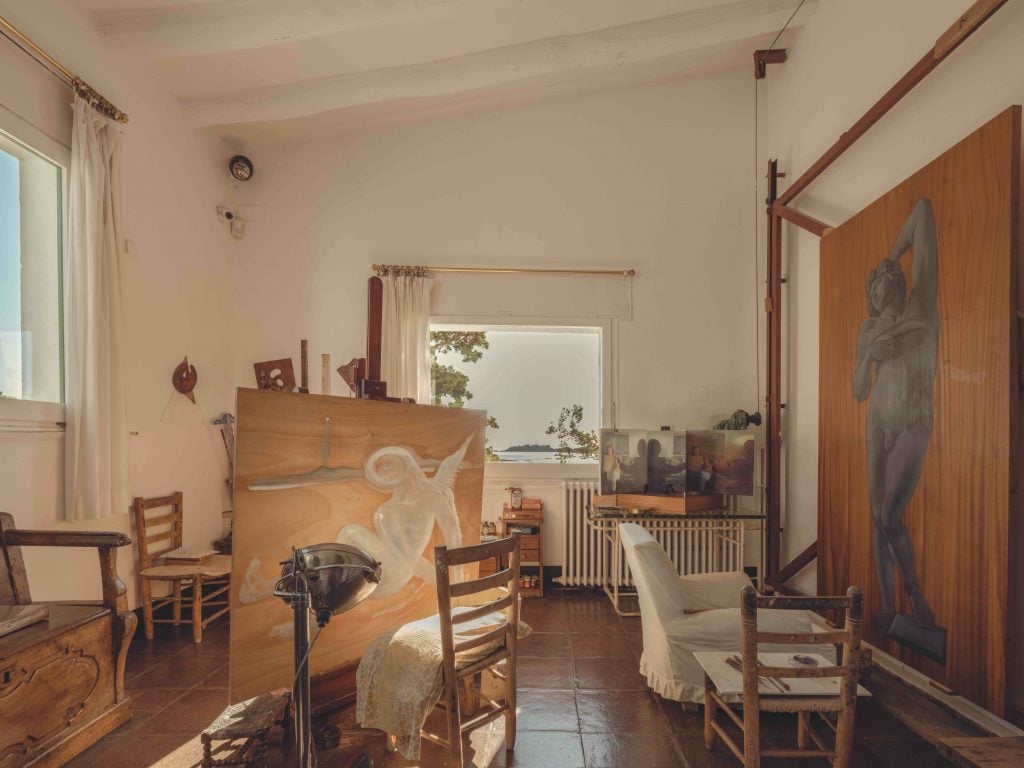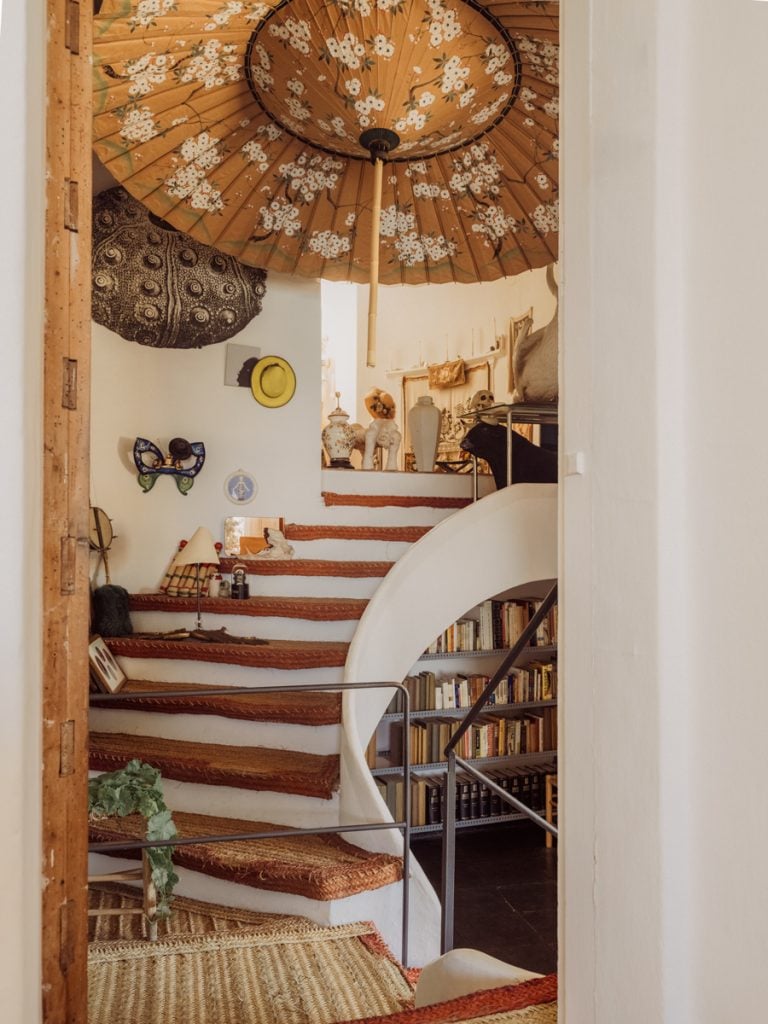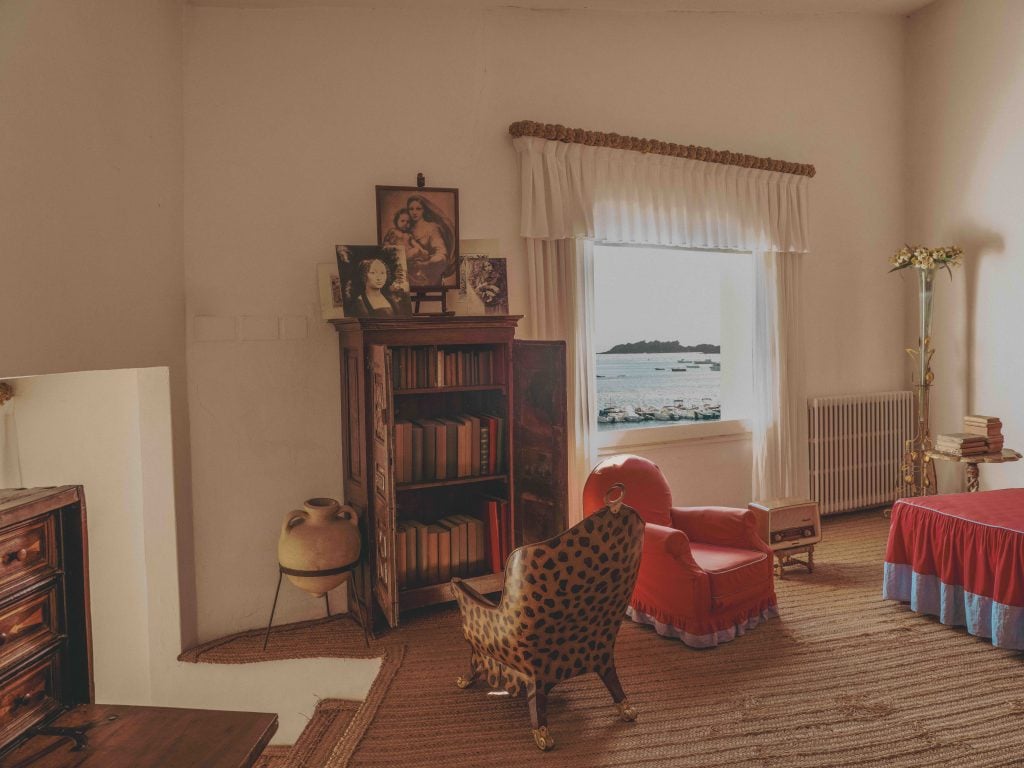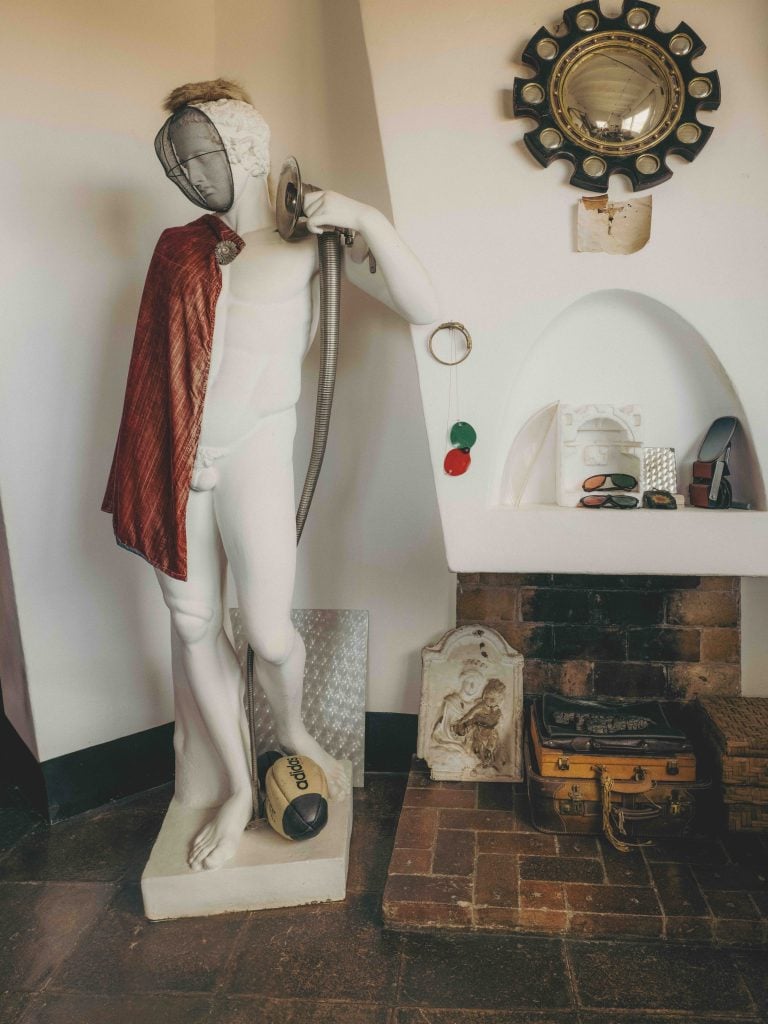Art World
See Inside Salvador Dalí’s Eccentric Mediterranean Home, as Shot by Artist Coco Capitán
The photographs are compiled in the new book, "Casa Dalí."

In 1930, Salvador Dalí made Port Lligat his home. Located on a peninsula on the Costa Brava in Catalonia, Spain, the village was “a unique planetary case,” the artist thought, where time moved slowly and the light proved golden. He purchased a small fisherman’s hut as his residence, then a neighboring cabin, then another. By the 1950s, Dalí had himself a labyrinthian compound of conjoined huts, housing living spaces for him and his wife Gala, his studio, a library, and even a pigeon loft. There, the couple would remain until Gala’s death in 1982.
Today, the surrealist icon’s Port Lligat residence has been preserved by the Fundació Gala-Salvador Dalí as a museum. Visitors are invited to take intimate tours of the home, its whitewashed interiors still bearing the artist’s offbeat taste in furnishings. Its exterior is marked by a giant unhatched egg poised on a rooftop.

An image from Casa Dalí. Photo: Coco Capitán, courtesy of Apartamento.
One of the site’s recent visitors was artist Coco Capitán, who snapped a series of sepia-tinted photographs now compiled in Casa Dalí. Released by the Barcelona-based interior magazine Apartamento, the book offers a rare peek into Dalí’s abode, as seen through Capitán’s alluring lens, with an introduction by Spanish architect Oscar Tusquets, one of the artist’s friends who visited the home in the 1960s.
“Everything he said was subjective,” Tusquets wrote of Dalí. “He was original, brilliant, and tremendously good fun.”
“Fun” is how one might also describe the interior of Dalí’s home. However sprawling the space grew—outside, the couple would later add a swimming pool and a white chalk path that ran parallel to the sea—the accommodations remained cozy. “The smaller the more womblike,” Dalí decided. He and Gala would decorate the space with unusual objects from a taxidermized polar bear bedecked with necklaces to a sensual couch modeled after Mae West’s lips.

An image from Casa Dalí. Photo: Coco Capitán, courtesy of Apartamento.
Capitán’s photos capture the Dalís’ other interior decorating choices. In one, a nude statue wears a fencing mask with a football at its feet; in another, a massive Japanese paper umbrella is installed over a winding staircase. Art touches also come into view in an image of a drawer crammed with the artist’s brushes, and a shot of a bookcase in the couple’s bedroom decorated with prints of masterpieces by Leonardo and Raphael.
The experience of photographing the casa seems to have afforded Capitán introspection, too. The cover of the book features a poem she wrote while in Port Lligat, scrawled in her distinct handwriting. “Busy as it gets,” she wrote, seemingly from a dining establishment. “Everyone wants a table / I’ve got one all to myself.”
See more of Capitán’s photographs below.

An image from Casa Dalí. Photo: Coco Capitán, courtesy of Apartamento.

An image from Casa Dalí. Photo: Coco Capitán, courtesy of Apartamento.

An image from Casa Dalí. Photo: Coco Capitán, courtesy of Apartamento.

An image from Casa Dalí. Photo: Coco Capitán, courtesy of Apartamento.

An image from Casa Dalí. Photo: Coco Capitán, courtesy of Apartamento.

An image from Casa Dalí. Photo: Coco Capitán, courtesy of Apartamento.





